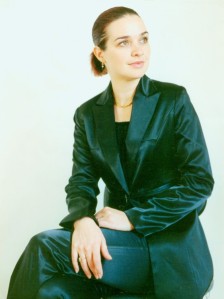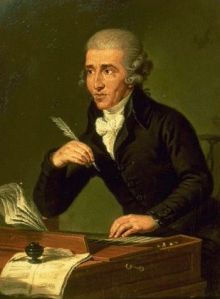What do Austrian composer Haydn and gypsies have in common? More than you might think. A good friend of HPO Composer-in-Residence Abigail Richardson-Schulte, Katarina Curcin, points out the correlations and differences between the two music types in her piece Gypsies.
Serbian-Canadian composer Katarina Curcin earned a Bachelor’s of Music in Serbia before completing her Masters and Doctorate degrees in composition from the University of Toronto. In honour of Haydn, CBC and the Tuckamore Festival commissioned Katarina to compose a piece in celebration of the traditional classic composer. Her piece Gypsies is derived from Haydn’s Trio in G Major which is often referred to as Gypsy or Gypsy Rondo because of the Hungarian style present in the fourth movement. Yet, Katarina has composed a piece which is stylistically contradictory to Haydn’s original work. “There is a two-measure quotation from Haydn’s quartet thrown into the piano part of my piece as the only direct reference to the composer,” says Katarina.
Gypsies is influenced by traditional Balkan and gypsy music which can be discerned in the melodic lines of the piece. Katarina separates her piece from Haydn’s traditional sonata structure, which was very common in the late 19th Century, and evokes the rawness and passion of gypsy bands in her work. Abigail notes that “Katarina’s [work] is much more raw emotionally as well as the straight sound of it, without the restraint of the classical period.”
Katarina portrays the passionate playing of traditional gypsy bands through specific sounds such as snap pizzicati, fast glissandi and tapping on the wood of the instrument. HPO Second Violinist Elizabeth Loewen Andrews, who will be performing Gypsies this evening, mentions that “there’s a fantastic section where the violin and cello use Bartok pizzicato, which is when we pull the string hard enough that it hits the fingerboard, creating a snapping sound. It’s a very grounded, heavy feeling section which morphs into a more frenetic dance, very effectively creating that image of these folk dancers as they move through the slow introductory steps of their dance, into something more rollicking.”
Another difference between the pieces lies within their titles. Katarina pluralized the title of her piece to refer to travelling gypsies that were influenced by music they stumbled upon in different regions which they came to make their own. In the same way, Katarina has made her composition unique by invoking her Serbian heritage in her writing: “My Serbian heritage is heard in my music and I like to incorporate some of the traditional elements of the Balkans as the starting inspiration. I have been living in Toronto since 1999 but my roots will always be present in my work. At least, this is how I feel about it today,” says Katarina.
You can hear Katarina’s composition Gyspies at tonight’s concert A Canadian Mosaic at Christ’s Church Cathedral as part of the HPO’s What Next Festival. Doors open at 7:30pm and admission is free. Feel free to purchase a glass of wine or beer while you enjoy the concert performance.
Here’s a look at Katarina as she discusses her Serbian heritage and its influence in her compositions:

